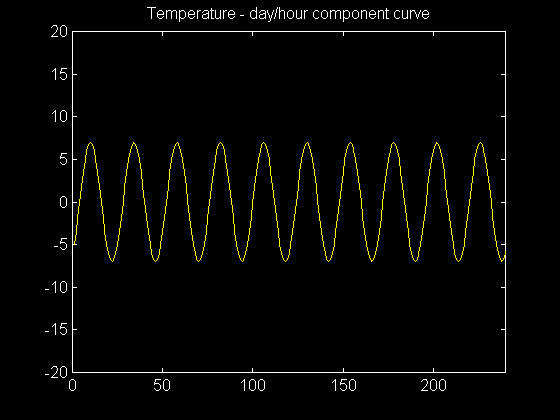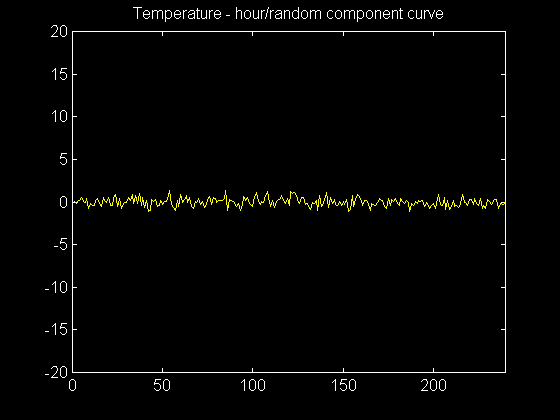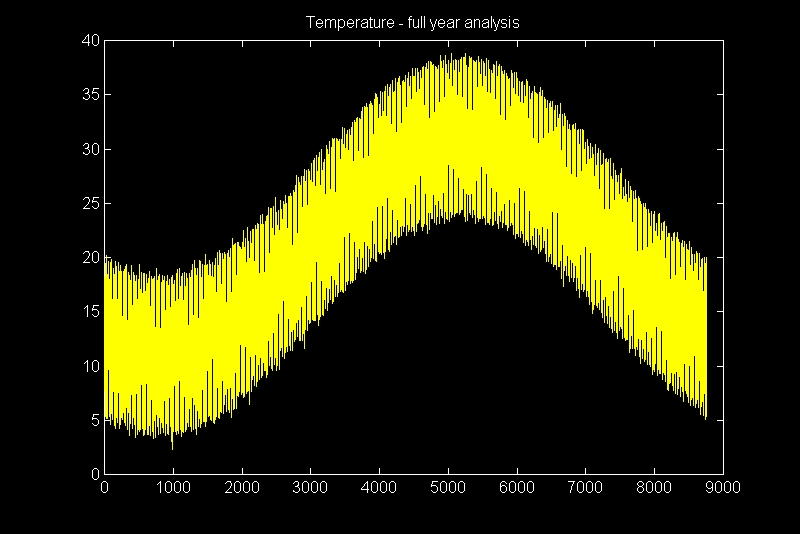
GENESIS: Temperature / Energy Models
Created by: Harris Georgiou - mailto:xgeorgiou@yahoo.com
University of Athens - Department of Informatics,
Postgraduate Program (MSc),
Digital Signal Processing & Computer Systems.
The following images are samples of randomized fluxuation models for environment temperature and/or ambient energy fluxuation, generated by the protyped TempFlux engine. The process if fairly simple and fully parameterized according to the properties of the final model characteristics. The basic parameters are:
Typical values for these parameters are: Y={ 10, 365, 240, 21 } for yearly wave, D={ 7, 24, -4, 0 } for daily wave and H={ 0.5 } for hourly random artifacts. This parameter set should produce a valid temperature model for any coastal region in the Mediterranean.
The generation process is actually no more than a combination of different periodic and randomized factors with different weights, in order to produce a fluxuation of the desired form and ranges. In the current form, the engine creates a 1-D function by combining the waves of yearly and daily fluxuation, thus producing a combined wave with daily-basis resolution. The final wave is produced by adding hourly-basis artifacts of stochastic nature. Although an auto-regressive model for hourly changes would probably be more realistic, the choice was made not to use any such scheme in order to produce more random fluxuations and avoid any hour-scale model definition as it would produce large data sets even for small time ranges. However, if necessary, the same logic of combined wave components can be use to produce fluxuation models even to a resolution of minutes.
TempFlux prototype is currently implemented in Matlab code, all included in one autonomous file [ yeartemp.m.txt ]. As always, all software is distributed fro free use under the terms of MPL-Mozilla-v1.1 licence. For any comments, questions or bug reports, feel free to contact the author.

Figure 1: Periodic yearly energy fluxuation.

Figure 2: Periodic daily energy fluxuation.

Figure 3: Periodic hourly energy fluxuation.

Figure 4: Periodic combined energy fluxuation (closeup).

Figure 5: Periodic combined energy fluxuation (full year).
Last updated: 15-Apr-2000.
Harris Georgiou
http://xgeorgio.n3.net
mailto:xgeorgiou@yahoo.com